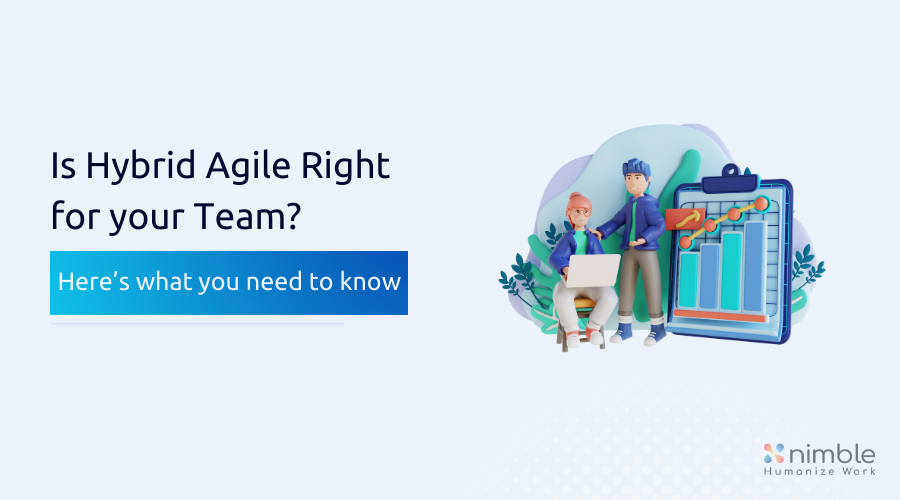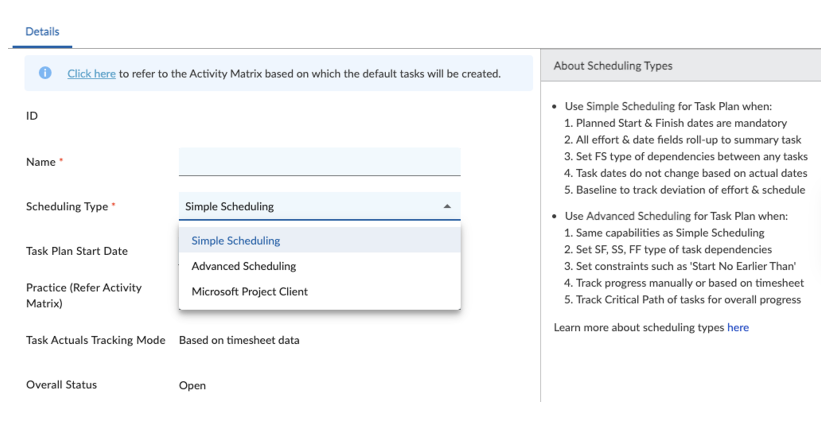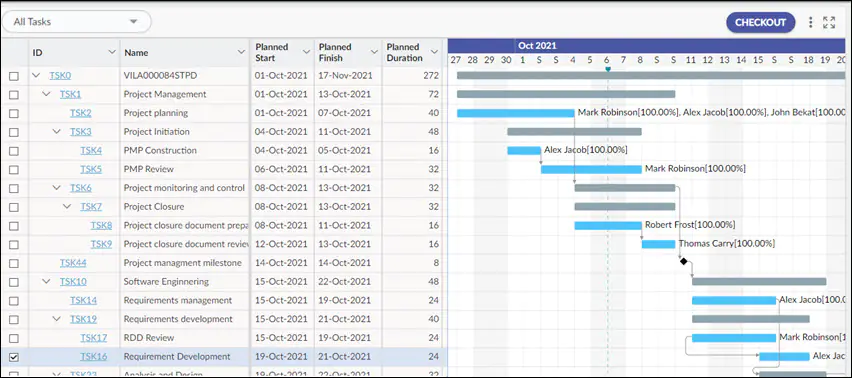Navigate to
Is Hybrid Agile Right for your Team? Here’s what you need to know
- 5 mins read
-
By Elizabeth Harrin
- Updated on February 16, 2024

Waterfall and agile approaches are often talked about as rivals; two ends of a spectrum where project teams are forced to declare their loyalty to one way or the other.
That’s changing: the modern way of working is to enable teams to use the best method for the work, even within the same project or program. Plan the work over the longer term with predictive methodologies, execute the delivery with iterative approaches – and everyone on the team has the software and capacity to get their work done.
Hybrid agile is the name that has been given to this blend of both. It’s a harmonious way of using both agile and waterfall in tandem without the oppositional narrative that really doesn’t help us get work done. Today, the focus is on using whatever works to drive results, deliver change and align the work to strategic imperatives.
Sounds like something that would be too difficult to implement in your organization? If you are a Nimble user, you’ve already got the tools to make it a reality.
In this article we’ll share 8 hybrid agile benefits, and none of them require you to lose pace or create lots of documentation!
8 Advantages of Hybrid Project Management
There are lots of benefits to enabling and empowering the team to work in the best ways for them, so we’ve had to limit ourselves to the top 8 that come up time and time again in our conversations with project professionals and senior leaders. Read on to learn how you can benefit from hybrid agile.
1. Mix certain and uncertain work
Agile approaches work when there is uncertainty, predictive approaches work when you know what’s going to happen. Often, project work involves both. Hybrid allows you to use the right management approach for the project task.
Plan around organizational funding and governance timelines while keeping the delivery aspects agile. In Nimble Hybrid, there are multiple levels of scheduling complexity to choose from, allowing tremendous flexibility in how work is scheduled.
2. Big bang go live
Typically, agile methods release features often, but sometimes that isn’t the right business decision. I’ve worked on projects where we’ve had to go live as a big bang (all features at the same time) because taking a system out of production can only be done at certain points during the year.
If you’re working around financial year end, or other fixed dates, you need to be able to manage releases at a time that suits the business. Depending on the features being released and the nature of the project, it might be possible to do phased, iterative releases which does lower the risk. However, the choice might be to transition everyone to the new, fully-featured version at the same time and a hybrid agile methodology allows for that.
3. Better visibility
Daily standups lead to better, more visible progress. Weekly or fortnightly team meetings can make it too easy for people to hide behind a percent complete total for a task and make it hard for the team to identify real blockers.
Agile approaches to managing delivery can increase visibility and make progress transparent. Even if you are working to a go live date far in the future, you can keep the pace and visibility high by drawing on agile ceremonies.
Use Nimble’s configurable dashboards to create a single version of the truth for the whole team, regardless of what method of planning and delivery they are using. All data can be surfaced to provide visibility and avoid conflicting, manual reporting.
4. Better governance
Predictive phases and stage gates can be incorporated into your plan. This is especially helpful in large organizations that work on funding cycles, governance points and have the expectation of monthly steering committees.
Typically, executives want to keep those formal governance structures and might find it difficult to shift to a fully agile environment. Hybrid methods allow you to keep agile delivery approaches while still meeting exec expectations for ongoing governance requirements because you can do both.
In Nimble Hybrid, tasks can be marked as ‘hybrid’ and you can track progress through advanced scheduling options. By linking child workitems to the Hybrid task type, you can monitor progress effectively.
5. Enhance collaboration and communication
Teams work best when they know what to do, who is doing what, and how they have to work. Focus on making sure teams know what is happening – this is something that agile approaches are very strong at because collaboration is at the heart of working in an agile way.
Teams using an agile waterfall hybrid model can work with the same level of collaboration, communication and cooperation, drawing on the good practices of agile methods. Overall, this can boost the way the team works together, because the expectations are high that there will be team cohesion.
6. Define dates and budgets while remaining flexible
What are the questions senior leaders ask you the most? In my experience, execs like to know when a project will be delivered and how much it will cost. Hybrid lets them have that detail while keeping the delivery portion running quickly and smoothly.
In Nimble Hybrid Agile, the program manager can plan the critical path, track performance against baseline and create a Gantt chart, while delivery teams use release burn ups and cumulative flow diagrams to track progress.
7. All teams use the same software
Another benefit of hybrid agile ways of working is that you can have all your teams working from the same software tool. Choose tools like Nimble that allow the whole team to work on the same project, regardless of whether they want to see burndown charts or a Gantt chart. Create a project view and nothing needs to be filtered off into an IT-only task list.
8. Risk mitigation
Finally, another benefit for hybrid agile methods is the opportunity to mitigate risk. Because of all the other benefits, projects can be delivered more reliably and with a greater degree of success.
Hybrid approaches combine the best of both ‘worlds’ and allow the team to work in ways that are both comfortable and conducive to delivery.
The agile hybrid method has advantages to consider when choosing the right methodology for your team. Maybe it’s time to think about giving your team the capabilities to deliver in the most flexible way?
Nimble Hybrid Agile empowers teams to seamlessly implement Hybrid Agile projects by combining the flexibility of Agile methodologies with the structured approach of traditional project management, ensuring adaptability and efficiency throughout the project lifecycle. Signup for a Free trial.
About Author:
Agile 101
What is an Agile Epic? Benefits of Using Them
Learn what an Agile epic is, how it can streamline project management, and the benefits of incorporating epics into your Agile workflow.
Is Hybrid Agile Right for your Team? Here’s what you need to know
Explore the suitability of Hybrid Agile for your project needs in our comprehensive article. We delve into the benefits, considerations, and key factors to help you determine if this approach aligns with your organization’s goals and project requirements.
What is Hybrid Agile Project Management? A Short Guide
Discover the power of Hybrid Agile project management: achieve flexibility and structure for successful project execution. Learn how to harness this dynamic approach.
Dynamic System Development Method (DSDM)
Dynamic Systems Development Method, DSDM for short, seeks to do what came to be known as ‘Agile’ well before the manifesto was written. Learn more about its philosophy, principles, pillars, and practices.
Scrum is an agile project management framework that prioritizes collaboration and iterative development for efficient results.
Scrum of Scrums: A Starting Point to Scaling Agile
Scrum of scrums is an approach to coordinate multiple scrum teams working together. Learn how it works, how to get started and how it differs from competing approaches.
Pair programming is a programming method in which two people work together on a single program. The first person is the “Driver”, who writes the code, the other person is the “Navigator” who reviews each line of code as it is typed, checking for errors. They exchange their roles on a regular basis.
Code refactoring in Agile is a well-known technique to keep a codebase healthy and amenable to change. Learn what it is and a sound process to follow.
Speed up your Agile planning and execution!
Signup for a FREE Trial of Nimble Agile




